We understand that everyone has unique learning needs, which is why ELSA has developed a personalized learning path just for you. Based on your choices during the account creation process, including your English level, industry, and interests.
To access Learning Path, on the Home screen, click “Learn” button.
In Learning Path, you will see a list of units and lessons of different games. Each unit contains 6 to 10 lessons with a variety of games including.
Once you complete all the units in the learning path, your CEFR level will increase by one level.
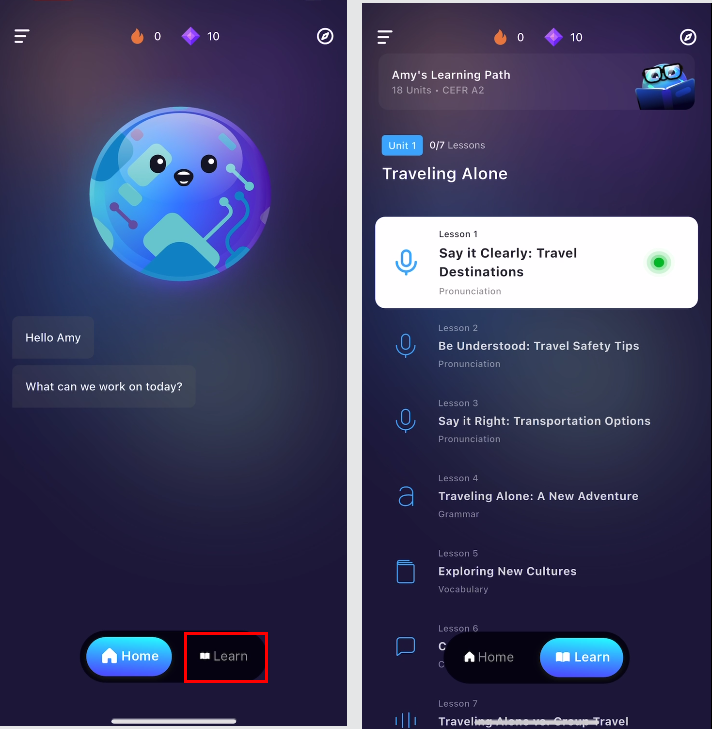
Game Types in Learning Path
Different game types are categorized by English language skills and proficiencies required across CEFR. Game types are offered depending on the CEFR levels
- Grammar
- Vocabulary
- Conversation
- Pronunciation
- Word Stress
1. Grammar Games
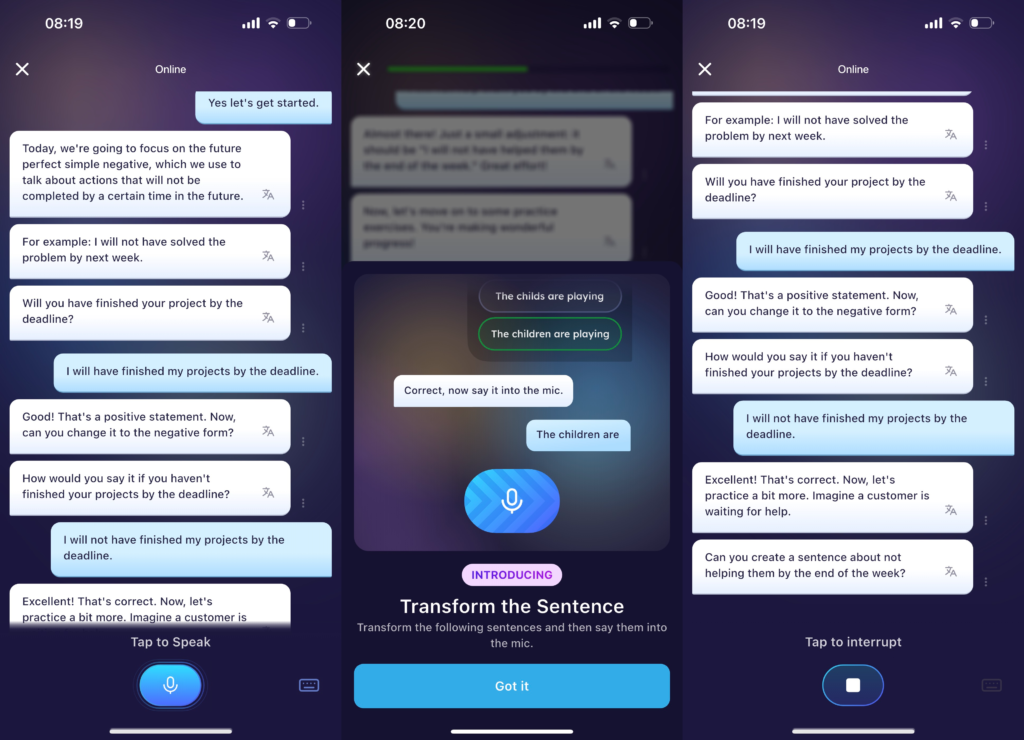
- Purpose: Help learners understand and apply different grammatical structures.
- Activities: After learning a grammar concept (e.g., past simple, conditionals), learners practice forming complete, grammatically accurate sentences using that structure.
- Focus Areas:
- Verb tenses (e.g., past simple, present perfect)
- Sentence structure
- Prepositions, articles, conjunctions, etc.
- Level Suitability: All CEFR levels, with increasing complexity from A1 to C1.
2. Vocabulary Games
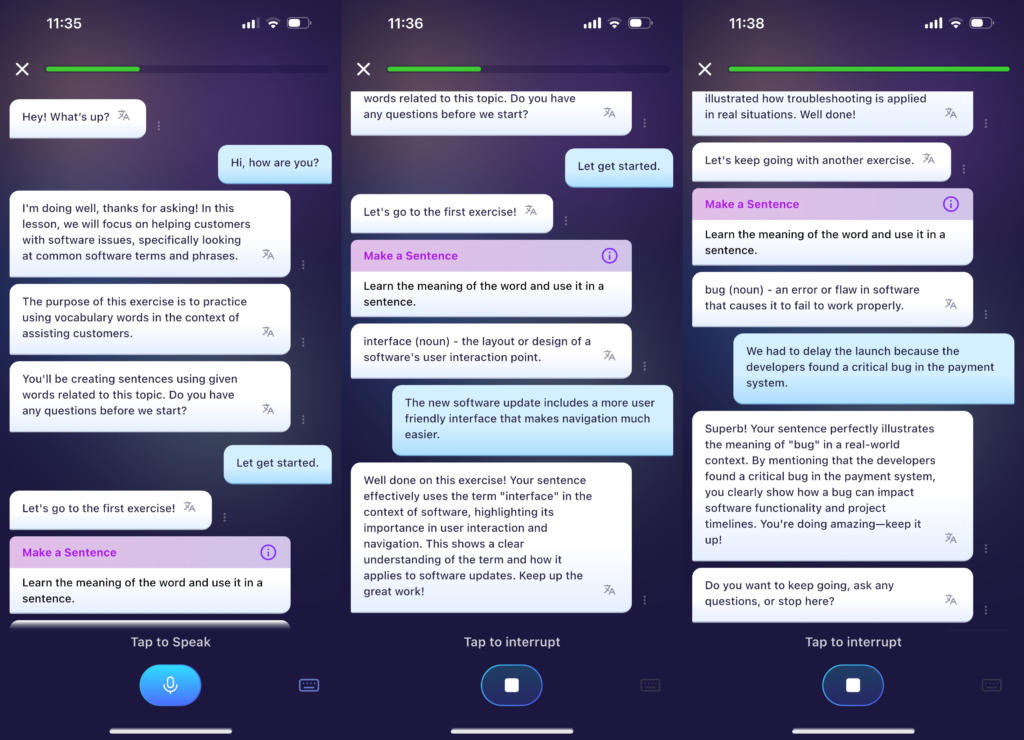
- Purpose: Build and reinforce vocabulary specific to themes or fields selected in the learning path (e.g., Business English, Travel, Technology).
- Activities: Learners are given a word and must form a sentence using that word correctly.
- Focus Areas:
- Field-specific terminology
- Synonyms and antonyms
- Collocations and phrases
- Level Suitability: All CEFR levels; vocabulary difficulty adapts to the user’s level.
3. Conversation Games
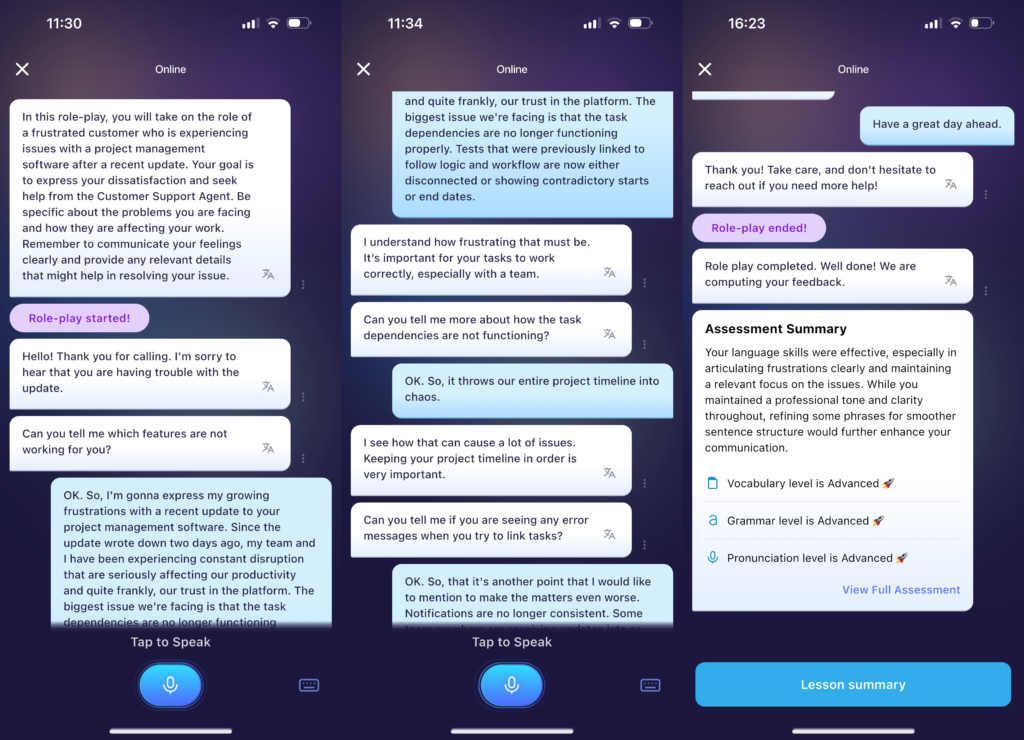
- Purpose: Simulate real-life conversations with an AI to practice speaking fluency and interaction.
- Activities: Role-play scenarios (e.g., job interview, restaurant dialogue) where learners respond to prompts.
- Feedback Provided:
- Pronunciation: Accuracy and clarity
- Grammar: Sentence structure and correctness
- Vocabulary: Word choice and range
- Relevance: Appropriateness of the response
- Register & Politeness: Formality and tone
- Confidence: Fluency and natural flow
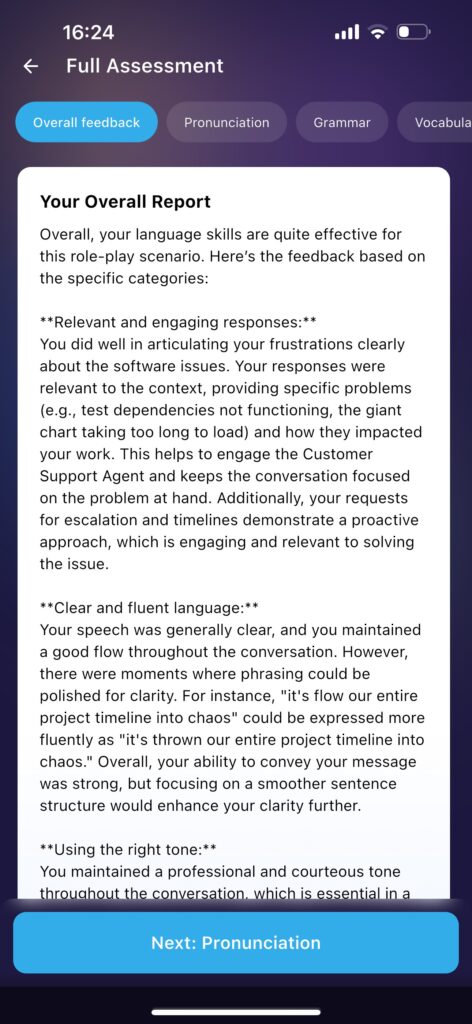
- Level Suitability: Best suited for levels A2 and above.
4. Pronunciation Games
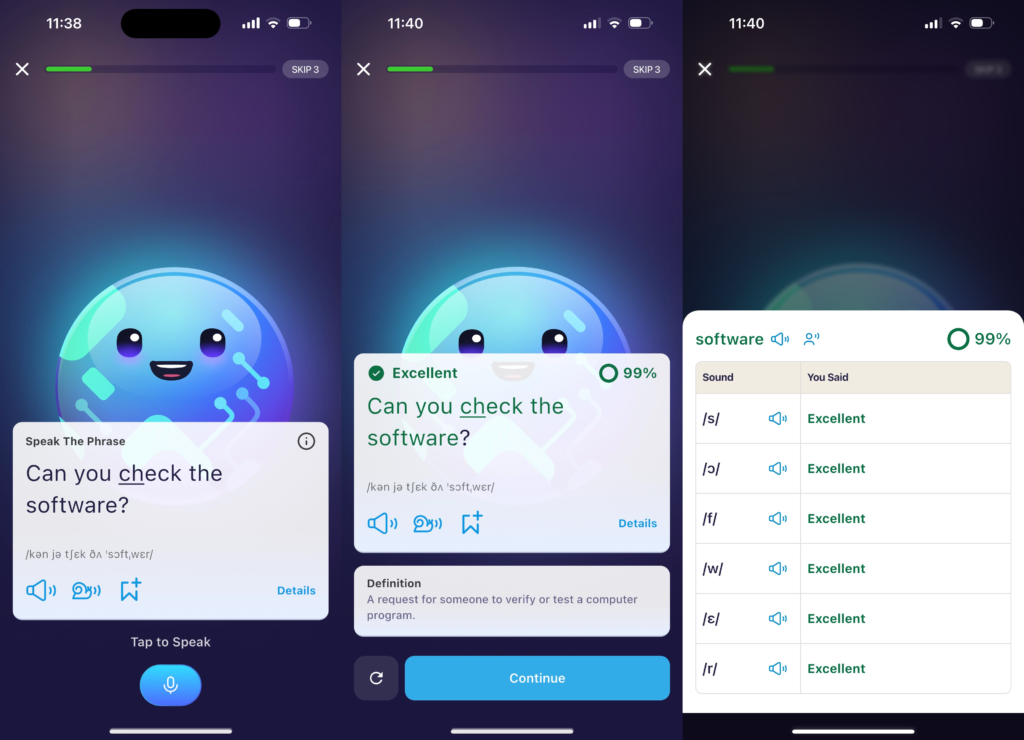
- Purpose: Improve pronunciation of individual words and short phrases.
- Activities: Listen and repeat exercises; users can tap on words to get detailed pronunciation analysis.
- Features:
- Breakdown of user’s pronunciation
- Feedback and re-practice options
- Level Suitability: All CEFR levels; recommended from A1 onwards.
5. Word Stress Games
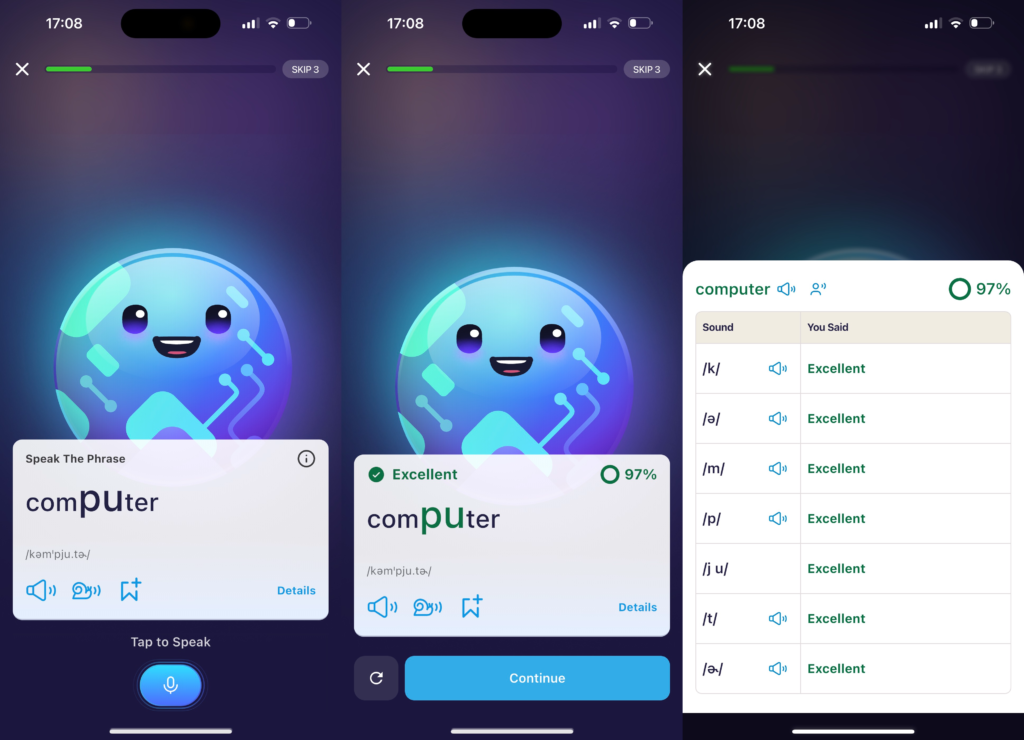
- Purpose: Train learners to place stress on the correct syllables within a word.
- Activities: Identify or speak the word with correct stress; visual cues often provided.
- Focus Areas:
- Multisyllabic word stress
- Intonation patterns
- Level Suitability: From A2 level upward where stress patterns become more important.
6. Listening Games (Optional)
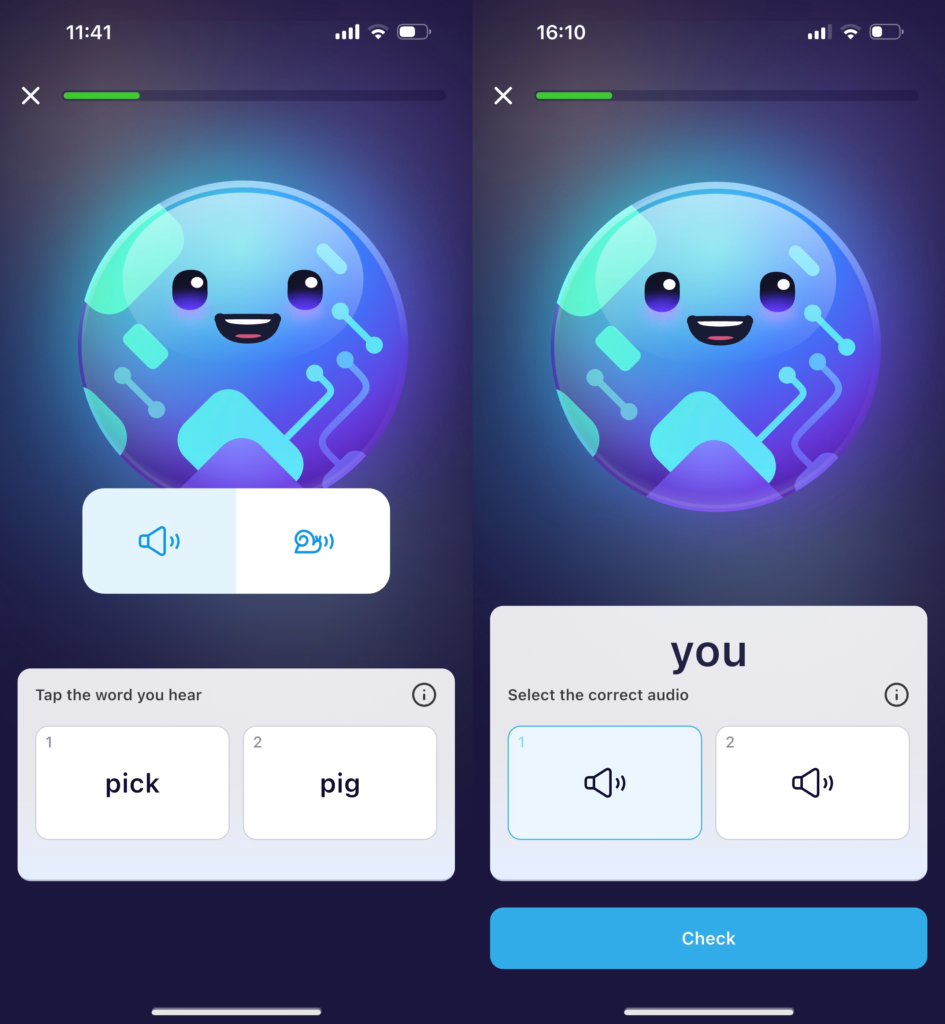
- Purpose: Enhance listening comprehension, especially at beginner levels.
- Activities: Listen to a word and choose the correct answer from multiple choices.
- Focus Areas:
- Basic comprehension
- Everyday phrases
- Word recognition
- Level Suitability: Only available for A1 and A2 users, where listening support is most crucial.






